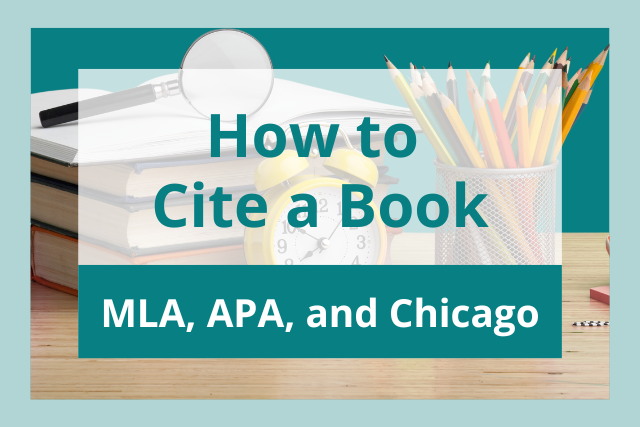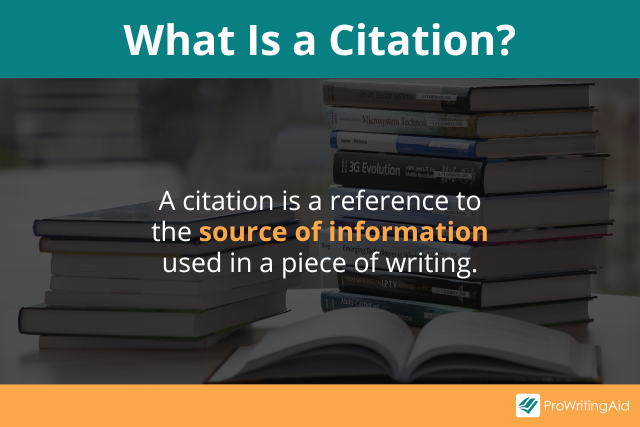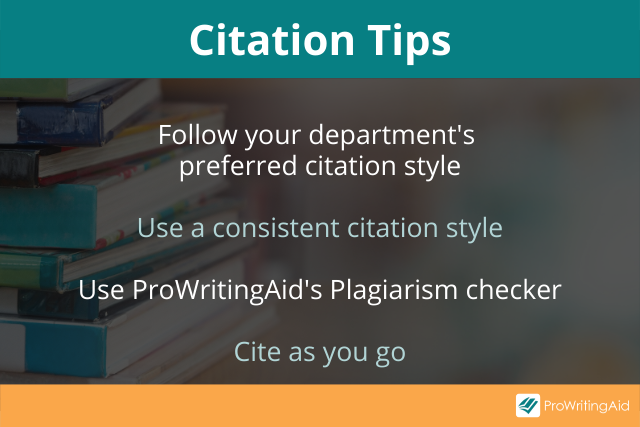
For some of us, the thought of compiling citations gives us flashbacks to those days of college essay writing. However, citations are a key part of academic writing and your overall academic career.
It’s important to cite your sources for several reasons. It shows your readers you’ve done the research and improves your credibility, it gives credit to the authors of your sources, and it prevents plagiarism.
In this article, we’ll discuss how to cite a book in various citation styles—MLA, APA, and Chicago.
Citing a Book in MLA, APA, and Chicago Styles
Citation styles are just different guidelines on how to document your sources. You should use them whenever you quote, paraphrase, or summarize a source. Your professor or publisher will tell you what citation format to use.

There are many different citation styles, but the most frequently used at the high school and university level are American Psychological Association (APA), Chicago Manual, and Modern Language Association (MLA).
In-text citations are listed within sentences in an essay. Source citations can take the form of endnotes or footnotes. We’re going to look at how to do both .
How to Cite a Book in MLA Citation Style
When citing a book using the MLA (Modern Language Association) format, there are some basic elements that should be included: author’s name, book’s title, publisher of the book, and the publication date.
An MLA in-text citation should include the author’s last name and a page number in parentheses. There should be no punctuation between them, unless there’s a series of non-consecutive pages, and in that case you can separate the pages by a comma.
- Time travel in literature is an important trope (Gleick 22).
- At their first meeting, Mr. Darcy shows ambivalence toward Lizzie (Austen 35, 38–40).
Every time you cite something in-text, you need to write a corresponding citation in a "works cited" section at the end of your essay. The standard citation format for printed books looks like this:
- Author’s last name, First name. Title of the Book. Publisher, Year published. (See the MLA handbook for more details).
You also need to get the capitalization right in your headlines. For MLA headlines, you should capitalize all words except for articles, prepositions shorter than four letters, or conjunctions unless they are the first word.
Here’s what citing an actual book in MLA style would look like:
- Austen, Jane. Pride and Prejudice. Penguin Classics, 1813.
- Gleick, James. Chaos: Making a New Science. Penguin, 1987.
How to Cite in MLA Style with Multiple Authors
If the book you’re citing has two authors, here are the formats you should follow.
For in-text citations, include the names of both authors and the page number.
- Mitochondria are the “powerhouse of the cell” (Ferguson and Grant 55–56).
If you're referencing a text by more than two authors, you should name the first author, and then write “et al.” along with the page number of the quote you're using.
- You inherit your mitochondrial DNA from your mother’s side (Ferguson et al. 34, 87).
How to Cite a Book in APA Citation Style
APA format is the American Psychological Association citation. This style guide is frequently used in both hard sciences and social sciences.
The in-text citation for a book includes the author’s last name, the year, and a page number. You can leave off the page number if you’re referencing an entire book.
Unlike in MLA, you should use a comma between the author, the year, and the page numbers you're quoting from. Instead of writing "page 1", shorten page to “p.” for a single page, or write “pp.” if you're quoting from multiple pages.
- Alexander the Great was the son of Philip II of Macedonia (Stonemason, 2008, p. 5).
- “I don’t enjoy a soggy bottom” (Berry, 1967, pp. 10–11).
When citing a book using APA in your reference page, you should always include the author’s name, the publication year, the book title, and the publisher. When writing the author’s name, you should write their last name first, then their first initial, then their middle initial, e.g. Martin, G.R.R.
It’s important to note that the title of the book should be italicized and in a sentence case format (but capitalize the first word after a colon).
- Author, F. M. (Year of publication). Title of work: Capital letter also for subtitle. Publisher Name.
Here’s what a this would look like with a real book:
- Stoneman, R. (2008). Alexander the Great: A life in legend. Yale University Press.
How to Cite a Book in Chicago Citation Style
When citing a book in the Chicago Manual style, there are two options: notes and bibliography or author-date. The variation you use will typically depend on your area of study.
Humanities subjects, such as history, literature, and the arts often use the notes and bibliography method, while the sciences and social sciences more often use the author-date system for their citations.
Notes and Bibliography Style
The notes and bibliography is the most common type of Chicago style citation. In this system, footnotes or endnotes are used for in-text citations. Add footnotes at the end of the page where the source is referenced. List endnotes at the end of each chapter or at the end of the entire document. There should also be a full listing of all sources at the end of your work in a Chicago style bibliography.
When citing a book (for both footnotes and endnotes), use a superscript with consecutive numbering and place them after the period in sentences.
When referencing a book for the first time, there should be a full footnote that includes the author’s full name. If you cite again the same book, then you should only include the author’s last name, a shortened version of the book title, and the page number.
Here’s the format for a full note:
- Author first name last name, Book Title: Subtitle (Place of publication: Publisher, Year), Page number(s). (See the Chicago manual for full details.)
Here’s the format for a short note:
- Author last name, Shortened Book Title, Page number(s). (See the Chicago manual for full details.)
When including a book as a source in the bibliography the format should look like this:
- Author last name, first name. Book Title: Subtitle. Place of publication: Publisher, Year. (See the Chicago manual for full details.)
Here’s what that looks like when citing an actual book
- Rhys, Jean. Wide Sargasso Sea. London: Penguin, 1996.
Author-Date Style
The author-date style for in-text citation consists of the author’s name, publication year, a page number. Here’s what that format should look like:
- (Author’s Last Name Year)
Cite a book source in parentheses with no punctuation between the author’s name and the year.
Here’s how that looks with an actual book citation:
- Always use an editing software to proofread your work (Smith 2012).
If you’re referencing a particular section of the book then you should include the page number. In that case, separate the page number(s) from the year with a comma.
- Always use an editing software to proofread your work (Smith 2012, 21–22).
A reference list should come at the end of your paper with a detailed list of all your sources. Here’s what that format should look like:
- Author last name, first name. Year. Book Title. Edition. Place of publication: Publisher.
- Smith, James. 2012. Example Book. New York: Norton. (See the Chicago manual for full details.)
Book Citation Tips
Citations can be intimidating, but with practice they get easier. Here are a few tips on how to make your citation and essay writing journey easier.

- Always consult your department or school guidelines on which citation style is appropriate.
- Be consistent and use the same citation style throughout your paper.
- Use ProWritingAid’s Plagiarism checker to see where you might have missed using the correct citation
- Write down the complete citation information for each book as you go along and don’t wait until the end
Once you get the hang of it, citing a book will be a breeze. Make sure to bookmark this article so you can always turn to it for quick reference.

